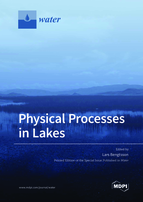Physical Processes in Lakes
A special issue of Water (ISSN 2073-4441). This special issue belongs to the section "Hydrology".
Deadline for manuscript submissions: closed (15 June 2021) | Viewed by 28535
Special Issue Editor
Special Issue Information
Dear Colleagues,
Biological processes in lakes very much relate to physical processes such as mixing and exchange between water, atmosphere, and sediment. Technical systems must be adapted to lake physics. The numerous climatological studies of today are mostly related to large-scale processes and do not involve lakes in detail. Additionally, the thermal conditions are different in tropical lakes, temperate lakes, and arctic lakes, and during different parts of the year. In moderately high latitudes and high altitudes, lakes are ice covered for long periods. Thermal processes are strongly related to mixing. Studies of physical processes in lakes have been rather neglected in recent years. Findings can be found as separate papers in different kinds of scientific journals, but not as Special Issues on physical processes specifically pertaining to lakes.
Water now intends to publish an Issue where new findings on physical processes in lakes can be gathered. Contributions can be on broad topics, such as vertical and horizontal mixing and exchange of water between different parts of a lake; exchange processes between water and atmosphere and between water and sediment including heat, mass, dissolved oxygen, and CO2; and the effects of resuspension and sedimentation on biological life and light conditions. We are especially interested in the comparison of lakes in different climates and environments, and expected future changes.
Prof. Dr. Lars Bengtsson
Guest Editor
Manuscript Submission Information
Manuscripts should be submitted online at www.mdpi.com by registering and logging in to this website. Once you are registered, click here to go to the submission form. Manuscripts can be submitted until the deadline. All submissions that pass pre-check are peer-reviewed. Accepted papers will be published continuously in the journal (as soon as accepted) and will be listed together on the special issue website. Research articles, review articles as well as short communications are invited. For planned papers, a title and short abstract (about 100 words) can be sent to the Editorial Office for announcement on this website.
Submitted manuscripts should not have been published previously, nor be under consideration for publication elsewhere (except conference proceedings papers). All manuscripts are thoroughly refereed through a single-blind peer-review process. A guide for authors and other relevant information for submission of manuscripts is available on the Instructions for Authors page. Water is an international peer-reviewed open access semimonthly journal published by MDPI.
Please visit the Instructions for Authors page before submitting a manuscript. The Article Processing Charge (APC) for publication in this open access journal is 2600 CHF (Swiss Francs). Submitted papers should be well formatted and use good English. Authors may use MDPI's English editing service prior to publication or during author revisions.
Keywords
- Mixing processes
- Exchange processes: water–atmosphere
- Exchange processes: water–sediment
- Resuspension–sedimentation
- Thermal processes
- Lakes in different climates






